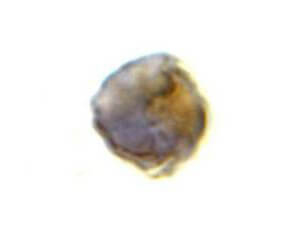Anti-TLR8 (RABBIT) Antibody
TLR8 Antibody
- SPECIFICATION
- CITATIONS
- PROTOCOLS
- BACKGROUND

| Host | Rabbit |
|---|---|
| Conjugate | Unconjugated |
| Target Species | Human |
| Reactivity | Human, Mouse |
| Clonality | Polyclonal |
Application
| WB, I, LCI |
| Application Note | Anti-TLR8 antibody has been tested for use in ELISA, immunohistochemistry, Immunocytochemistry, and western blot. Specific conditions for reactivity should be optimized by the end user. Expect a band approximately 115 kDa in size corresponding to TLR8 protein by western blotting in the appropriate cell lysate or extract. |
| Physical State | Liquid (sterile filtered) |
| Buffer | 0.02 M Potassium Phosphate, 0.15 M Sodium Chloride, pH 7.2 |
| Immunogen | This affinity purified antibody was prepared from whole rabbit serum produced by repeated immunizations with a synthetic peptide corresponding to an internal region of human TLR8 protein. |
| Preservative | 0.02% (w/v) Sodium Azide |
| Gene ID | 51311 |
|---|---|
| Other Names | 51311 |
| Purity | This affinity-purified antibody is directed against human TLR8 protein. The product is affinity chromatography purified via peptide column. A BLAST analysis was used to suggest cross reactivity with TLR8 protein from human and mouse sources based on 100% homology with the immunizing sequence. Reactivity against homologues from other sources is not known. |
| Storage Condition | Store vial at -20° C prior to opening. Aliquot contents and freeze at -20° C or below for extended storage. Avoid cycles of freezing and thawing. Centrifuge product if not completely clear after standing at room temperature. This product is stable for several weeks at 4° C as an undiluted liquid. Dilute only prior to immediate use. |
| Precautions Note | This product is for research use only and is not intended for therapeutic or diagnostic applications. |
| Name | TLR8 (HGNC:15632) |
|---|---|
| Function | Endosomal receptor that plays a key role in innate and adaptive immunity (PubMed:25297876, PubMed:32433612). Controls host immune response against pathogens through recognition of RNA degradation products specific to microorganisms that are initially processed by RNASET2 (PubMed:31778653). Recognizes GU-rich single- stranded RNA (GU-rich RNA) derived from SARS-CoV-2, SARS-CoV-1 and HIV- 1 viruses (PubMed:33718825). Upon binding to agonists, undergoes dimerization that brings TIR domains from the two molecules into direct contact, leading to the recruitment of TIR-containing downstream adapter MYD88 through homotypic interaction (PubMed:23520111, PubMed:25599397, PubMed:26929371, PubMed:33718825). In turn, the Myddosome signaling complex is formed involving IRAK4, IRAK1, TRAF6, TRAF3 leading to activation of downstream transcription factors NF- kappa-B and IRF7 to induce pro-inflammatory cytokines and interferons, respectively (PubMed:16737960, PubMed:17932028, PubMed:29155428). |
| Cellular Location | Endosome membrane; Single-pass type I membrane protein. Note=Endosomal localization confers distinctive proteolytic processing |
| Tissue Location | Expressed in myeloid dendritic cells, monocytes, and monocyte-derived dendritic cells. |

Thousands of laboratories across the world have published research that depended on the performance of antibodies from Abcepta to advance their research. Check out links to articles that cite our products in major peer-reviewed journals, organized by research category.
info@abcepta.com, and receive a free "I Love Antibodies" mug.
Provided below are standard protocols that you may find useful for product applications.
Background
TLR8 (Toll Like Receptor 8). Toll-like receptors (TLRs) are signaling molecules that recognize different microbial products during infection and serve as an important link between the innate and adaptive immune responses (1-3). These proteins act through adaptor molecules such as MyD88 and TIRAP to activate various kinases and transcription factors (4,5). Like TLR7, TLR8 is localized to endosomal or lysosomal compartments (6) and stimulates the innate immune response after activation by guanosine- and uridine-rich single-stranded RNA (7). Human but not murine TLR8 confers responsiveness to the antiviral compound R-848 (8).
If you have used an Abcepta product and would like to share how it has performed, please click on the "Submit Review" button and provide the requested information. Our staff will examine and post your review and contact you if needed.
If you have any additional inquiries please email technical services at tech@abcepta.com.













 Foundational characteristics of cancer include proliferation, angiogenesis, migration, evasion of apoptosis, and cellular immortality. Find key markers for these cellular processes and antibodies to detect them.
Foundational characteristics of cancer include proliferation, angiogenesis, migration, evasion of apoptosis, and cellular immortality. Find key markers for these cellular processes and antibodies to detect them. The SUMOplot™ Analysis Program predicts and scores sumoylation sites in your protein. SUMOylation is a post-translational modification involved in various cellular processes, such as nuclear-cytosolic transport, transcriptional regulation, apoptosis, protein stability, response to stress, and progression through the cell cycle.
The SUMOplot™ Analysis Program predicts and scores sumoylation sites in your protein. SUMOylation is a post-translational modification involved in various cellular processes, such as nuclear-cytosolic transport, transcriptional regulation, apoptosis, protein stability, response to stress, and progression through the cell cycle. The Autophagy Receptor Motif Plotter predicts and scores autophagy receptor binding sites in your protein. Identifying proteins connected to this pathway is critical to understanding the role of autophagy in physiological as well as pathological processes such as development, differentiation, neurodegenerative diseases, stress, infection, and cancer.
The Autophagy Receptor Motif Plotter predicts and scores autophagy receptor binding sites in your protein. Identifying proteins connected to this pathway is critical to understanding the role of autophagy in physiological as well as pathological processes such as development, differentiation, neurodegenerative diseases, stress, infection, and cancer.


